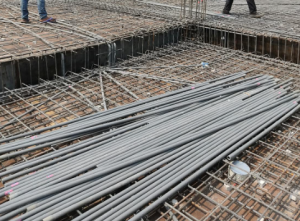Iron metal powders are fine particles of elemental iron, produced through various manufacturing processes such as atomization, reduction, or electrolysis. These powders have a wide range of industrial, scientific, and commercial applications thanks to their unique physical and chemical properties. The use of iron metal powders continues to expand across multiple sectors due to their versatility, cost-effectiveness, and environmental benefits.

Main Production Methods
There are three primary methods for producing iron metal powders:
- Atomization: This involves spraying molten iron into a gas stream, resulting in spherical particles with consistent size and shape.
- Reduction: Iron oxides are chemically reduced using gases like hydrogen or carbon monoxide to produce sponge iron powders.
- Electrolysis: Iron is deposited from a solution onto a cathode, then scraped off and ground into powder form.
Each method results in different powder characteristics, such as particle size, shape, and purity, which determine their suitability for specific applications.
Industrial Applications of Iron Metal Powders
1. Powder Metallurgy
The most significant use of iron metal powders is in powder metallurgy, a process where powders are compacted and sintered to form solid metal components. This method is widely used in the automotive industry to create gears, bearings, and other precision parts. The advantages include:
Reduced material waste
High production efficiency
Excellent dimensional accuracy
Customizable mechanical properties
2. Magnetic Materials
Iron metal powders are key in the production of soft magnetic components such as transformer cores, inductors, and electromagnetic shielding. Their high magnetic permeability and low coercivity make them ideal for alternating current (AC) applications. Powder-based cores are especially favored for their ability to reduce eddy current losses.
3. Additive Manufacturing (3D Printing)
With the rise of metal 3D printing, iron metal powders have found a niche in the additive manufacturing industry. Techniques like Selective Laser Melting (SLM) and Binder Jetting use fine iron powders to build complex geometries layer by layer. These methods are being adopted for prototyping and manufacturing of lightweight, high-strength components in aerospace, biomedical, and industrial engineering sectors.
4. Friction Materials
Brake pads, clutch plates, and other frictional components often contain iron metal powders as a filler and reinforcement agent. The powders contribute to heat resistance, mechanical strength, and controlled wear properties essential for safety and performance.
5. Chemical and Catalytic Uses
In chemical processing, iron powders serve as reducing agents and catalysts. For example, they are used in the purification of gases, water treatment (via zero-valent iron), and in reactions like the Fischer-Tropsch process for fuel synthesis. Their reactivity and large surface area are key benefits in these roles.
6. Welding and Soldering
Iron metal powders are added to welding rods and fluxes to enhance arc stability and increase the metal deposit rate. Their role is also crucial in metal joining processes for improving strength and conductivity.
Advantages of Using Iron Metal Powders
1. Sustainability
Iron metal powders contribute to sustainable manufacturing practices. Powder metallurgy, for instance, minimizes waste and energy consumption. Additionally, many iron powders are produced from recycled iron and steel, supporting circular economy models.
2. Design Flexibility
The powder-based production processes allow manufacturers to design intricate shapes and tailored material properties that would be difficult or costly to achieve with conventional methods like casting or forging.
3. Cost Efficiency
Because iron is abundant and relatively inexpensive, iron metal powders are cost-effective raw materials. They offer significant savings in both production costs and material usage.
Conclusion
The diverse use of iron metal powders across industries underscores their importance in modern manufacturing and technological innovation. From automotive parts to environmental remediation, the applications are both practical and transformative. As technologies like additive manufacturing evolve, the demand for high-quality iron metal powders is set to grow, further expanding their role in shaping the future of materials science.

